
What goes on inSIDE an editor’s brain?
By Andrew Chapman, Prepare to Publish Ltd
OK, I admit it up front: editors are a strange breed. On the one hand they can be forensically pedantic, which requires a certain sort of intellectual confidence; on the other, they are typically shy and would prefer not to attract attention.
And in fact that’s what good editing is all about: not attracting attention. The ultimate goal of a good editor is for their presence in a book to be undetectable, invisible. (You can also say the same of a good typesetter – the aim is not to ‘snag’ the reader’s eye.)
Nobody really notices when a book has been well edited – all they see is the clever, engaging prose of the author, and that’s how it should be. But people sure as heck notice when a book has been badly edited, or not really edited at all. In fact, it’s one of the most common reasons for a book being given a bad review on Amazon. Sometimes the reviewer makes that explicit – ‘the book is riddled with typos and grammatical mistakes,’ they grumble. Sometimes it’s more subtle: ‘This book doesn’t make any sense.’ Or even: ‘It started well but the middle was too dull to make me want to read to the end.’ All of these criticisms reflect badly on the author, and their sales figures – but in most cases they could be avoided with good editing.
![]()
What is editing?
There isn’t actually one answer to this – if you’re serious about getting a great book published, you should know that there are different types of editing. Most traditional publishers actually put a book (and its weary author) through three stages, and there’s no reason why self-publishers committed to Getting It Right shouldn’t do the same.
First is development editing, also known as structural editing. This the process of taking an author’s completed manuscript and looking at what makes the story tick, or what makes it stick. What if it’s non-fiction? That’s not necessarily different: a memoir, a history or a biography, for example, is still a narrative, and the reader will get much more out of being taken on a journey. Even a ‘how to’ book has a rhythm to it, and will have some potential structures that make more sense than others.
Does a book have too many different points of view? Are there too many scene breaks, or not enough? Does the author spend too much time ‘telling’ rather than ‘showing’ their story? All of these considerations come at the structural stage.
Sometimes the ‘dev edit’ involves tearing a book into chunks and rearranging them. Sometimes surprisingly subtle tweaks here and here can make a book sing in tune when it seemed tone deaf before. It might mean simplifying the story, or conversely elaborating it. In one novel I edited, there was just something not working right in the middle – in the end, the blockage was removed simply by swapping two chapters around, and suddenly it flowed from start to finish. The author was too close to the text to see it – but could totally see the improvement afterwards.

The second stage is the copy edit (also known as line editing). This is where the grumpy pedant is let out of their cage to maul the manuscript. More specifically, this typically means three things:
- Issues of style. Does the author string sentences nicely together, or do they get their words in a tangle? Most authors have their own tics – phrases they overuse, clichés they reach for, bad habits they may have got into. In one historical thriller I copy edited, the author had a habit of using passive constructions in his action scenes – ‘the barrel of the gun was charged and pointed at my assailant’, that sort of thing. Turning these around to make the protagonist the person in charge – ‘I rammed the ball into my musket and aimed it at Sir Willoughby’ (it’s OK, this isn’t the real text) – brought the action properly to the fore.
- Issues of consistency. This can affect a number of aspects of a piece of writing. It includes continuity errors – a character is wearing a red shirt in one scene and then a blue one in the next, or their age varies incorrectly – but also picky stuff like whether the author used ‘window-sill’ in one place, ‘window sill’ in another, and ‘windowsill’ in a third. There could also be changes in the consistency of tone – not deliberate changes of register, but cases where the writing is packed with action at one moment and then bloated with long descriptions the next (though this should be picked up at the development stage).
- Issue of accuracy. If the commas are in the wrong places, the meaning can get confused for the reader. People may not know grammatical terminology, but it’s often obvious when a sentences haven’t been constructed proper. And accuracy can affect the content, too. One novel I edited recently had lots of German names in it – some of them were wrong, and you can bet your schnitzel someone out there would notice. I don’t speak much German, but I sure as hell checked every single word, just to be sure. Another novel I tackled recently was well written and researched, set at a particular point of the late 1960s. The author had been amazingly meticulous in his research, but I checked every single detail, right down to the TV schedules in Britain on the night of the moon landings. So you can imagine my whoops of delight when I spotted he referred to a David Bowie album which at that precise point of history was in fact only a single. OK, maybe you can’t imagine that – but you never know when these little details might matter. This can be surprisingly rewarding from an editor’s point of view, in that you end up learning all sorts of things about a subject which might be new to you. It also makes editors quite good at pub quizzes.
All of this, it should be said, is a collaborative process – it’s not just a grumpy editor issuing edicts from their throne to the cowering author. We work together to make your book a better one – though it will take work on both sides!

The third stage of the usual editorial process is proofreading, which traditionally occurs only after a book has been typeset, in order to pick up new mistakes which have been introduced by the formatting (‘widows and orphans’ – short lines stranded at the top or bottom of a page, which just look wrong – being the classic example), and have a final sweep for any last textual errors. It’s all-too easy for a book to reach this stage and still have the occasional word missing, or a sneaky typo, or repeated words like ‘the the’ (unless referring to the British post-punk band, obviously).
In my business, we usually appoint different people as the structural and copy editors, largely because these types of editing are quite different themselves, and editors tend to excel at one or the other. ‘Dev eds’ are often writers themselves, too, with professional experience in storytelling. I often also choose a different person as the proofreader, simply on the basis that the more ‘pairs of eyes’ a book has on it, the better it will be. But it’s true that the boundaries can blur, and it’s quite common for copy editing and proofreading to be rolled into one process, for example.
My business partner has a nice way of describing all this with a metaphor: imagine your words being passed through finer and finer sieves. The structural edits pick out the biggest lumps; the copy editor picks out the medium lumps; and then at the end the proofreader finds the tiniest remaining ones.

Make an editor your friend
So we’ve seen some of the things that go through an editor’s head: ‘What would make this book flow better?’, ‘Why does this author use the word “desperately” 57 times in this book?’, ‘When did Bowie release that on an album?’, ‘Why don’t I have any friends?’
But what happens in the pedant’s cranium at that first point of contact with the author? This bit is very much up to you! Here are three common reactions from the editor when a new manuscript plops into their inbox:
- Excitement: ‘fantastic, I love spy thrillers, bring it on’
- Confusion: ‘why didn’t the author actually finish the book before sending it to me?’
- Dread: ‘why is all the dialogue incorrectly punctuated?’
And of course sometimes it’s a mixture of all three. Here, though, are a few pointers to help keep it nearer to No 1:
- Don’t just come to us (or a publisher, an agent, a marketer or anyone else, in fact) with an idea. Ideas are easy to come by, it’s the hard graft that goes into embodying them in book form that matters.
- And don’t come to an editor with half a book, either: finish your first draft! We need to see a whole to see the holes. Planning your book carefully beforehand, as Nick Stephenson advises, will make all of this easier.
- Don’t duck the donkey work: you should at least have taken the time to learn how to use punctuation properly and how to construct varied, interesting sentences. (One book I saw recently had to be copy edited before the structural edit simply to get it into readable English, and then go through the usual three-part process from scratch. You’ll be wasting your own money if you don’t at least take some care over the basics.)
- But you don’t need to be perfect – everyone makes mistakes, and can learn more about their craft. Sometimes, in fact, a manuscript which shows great promise but has clear flaws can be the most rewarding type to work on. In the case of the historical novel alluded to earlier, the author was brilliantly open to learning, and to hard work. For me it ended up being hugely satisfying helping to ‘midwife’ a great story into a healthier piece of writing.
- And don’t be afraid: editors don’t (usually) bite, and what we want most of all is to help your book fly. Ask us questions – and indeed disagree with us if you feel strongly about something.

I’m biased, naturally, but I think there’s no substitute for taking professional advice. Read Nick’s post here for his take on this. It’s all about investment, in both yourself and your book. If you treat your self-publishing project like a business, planning your book’s content, your route to publication (including editing!) and then your marketing, you’ve given yourself the best foundation you can.
And someone like me might just do a little bit better in their next pub quiz.
 Andrew Chapman is the founder of Prepare to Publish, a growing network of freelancers which provides editing and typesetting services to numerous publishing companies, and to self-publishers. Readers of this blog can get a 10% discount on these services – if you have at least completed a first draft! – using this link: http://www.preparetopublish.com/10K
Andrew Chapman is the founder of Prepare to Publish, a growing network of freelancers which provides editing and typesetting services to numerous publishing companies, and to self-publishers. Readers of this blog can get a 10% discount on these services – if you have at least completed a first draft! – using this link: http://www.preparetopublish.com/10K











